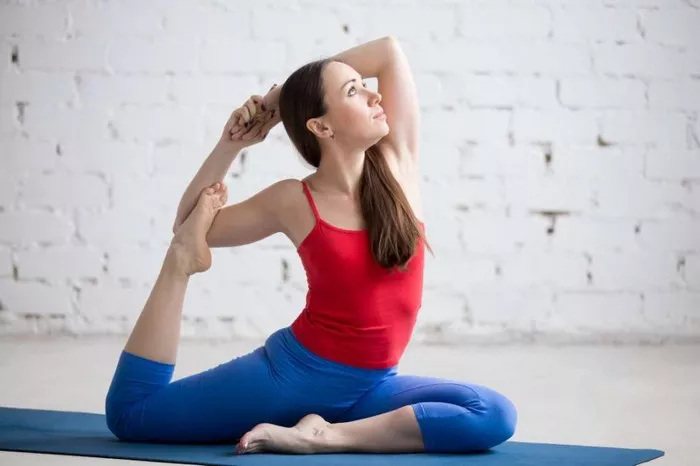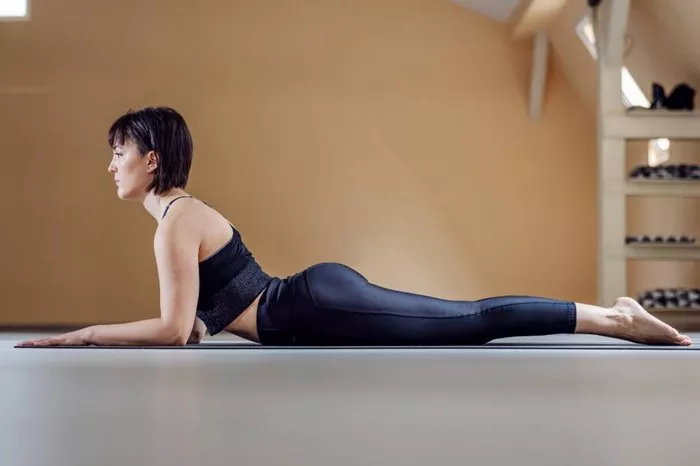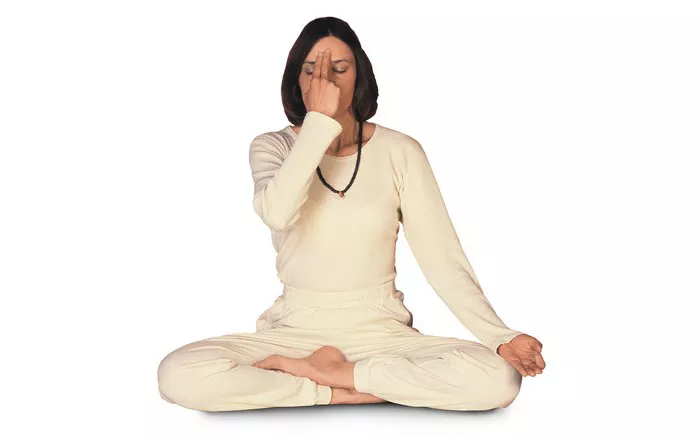Vinyasa Yoga is one of the most popular and dynamic forms of yoga practiced worldwide. With its fluid sequences of poses linked by breath, Vinyasa offers a unique combination of physical challenge, mindfulness, and breathwork. It’s often described as a “moving meditation,” where the breath leads the movement and helps practitioners cultivate a sense of calm, focus, and balance.
Though it is known for its flowing, energetic sequences, Vinyasa yoga is built upon certain foundational principles that shape its practice. These principles are often referred to as the “Five Pillars of Vinyasa Yoga.” Each pillar plays a crucial role in connecting the mind, body, and breath in a harmonious and transformative way. In this article, we will explore the five pillars in-depth, discussing their importance, how they interconnect, and how understanding these pillars can deepen your practice.
1. Breath (Ujjayi Pranayama)
The first and most important pillar of Vinyasa yoga is the breath. In fact, “Vinyasa” itself means “to place in a special way,” referring to the deliberate connection of breath and movement. The breath is the guiding force that unites the entire practice, and its regulation is essential for creating the steady rhythm that makes Vinyasa yoga so powerful.
Ujjayi Pranayama
The specific breathing technique used in Vinyasa yoga is called Ujjayi Pranayama, or “victorious breath.” Ujjayi breath is a type of controlled breath that is both audible and steady. To practice Ujjayi, you gently constrict the back of your throat, creating a soft, hissing sound as you breathe in and out through the nose. This technique serves several purposes:
Focus and Presence: The sound of Ujjayi breath helps you focus and remain present in your practice. The audible quality of the breath draws your attention inward, keeping your mind from wandering during the session.
Oxygenation and Energy Flow: The deep, steady breathing increases oxygen intake, helping to oxygenate the body and keep energy levels high during the practice.
Thermogenesis: Ujjayi breath creates internal heat, which is key to warming up the muscles and facilitating safe, effective movement, especially in a dynamic practice like Vinyasa.
By coordinating your breath with your movements, you bring a sense of flow to your practice. In Vinyasa, each movement is typically tied to an inhale or exhale. For example, you might inhale as you lift your arms overhead, and exhale as you fold forward into a standing forward bend. The connection of breath and movement is what makes Vinyasa unique from other yoga styles like Hatha, which does not emphasize a flow between postures.
Importance of Breath in Vinyasa Yoga
Mind-Body Connection: Breath serves as the bridge between the mind and body, helping you stay grounded and mindful during the practice. By concentrating on your breath, you can quiet the fluctuations of the mind and foster a deep sense of awareness.
Regulating Pace: The breath also serves to regulate the pace of the practice. It prevents you from rushing through postures and encourages a steady, thoughtful approach to movement.
Calming the Nervous System: The slow, controlled breathing pattern in Vinyasa yoga can activate the parasympathetic nervous system, promoting relaxation and reducing stress.
2. Posture (Asana)
The second pillar of Vinyasa yoga is Asana, or posture. Asana refers to the physical poses that make up the yoga practice. In Vinyasa, asanas are sequenced together in fluid patterns that flow from one to the next, creating a continuous movement.
The key to Vinyasa asanas is that they are typically linked by transitions, where the movement flows smoothly from one posture to another, guided by the breath. Unlike static forms of yoga that hold poses for extended periods, Vinyasa encourages a more dynamic practice that involves shifting quickly between poses, offering both a cardiovascular workout and a deep stretch for the muscles.
The Role of Asana in Vinyasa Yoga
Flexibility and Strength: Asanas in Vinyasa yoga work to build flexibility and strength simultaneously. The fluid transitions and held postures challenge the body to engage and stretch, targeting muscles, ligaments, and joints in various ways.
Alignment and Safety: While Vinyasa poses are fluid, alignment remains important to ensure the safety and efficacy of the practice. Each asana should be performed with mindfulness to avoid injury and support the body in moving efficiently.
Core Engagement: Many Vinyasa poses emphasize the core, both for strength and stability. Poses like Plank, Chaturanga, and Boat pose engage the core muscles, providing a full-body workout while enhancing balance and posture.
Common Vinyasa Asanas
Some of the most common asanas in a Vinyasa flow include:
- Downward-Facing Dog (Adho Mukha Svanasana)
- Warrior I and II (Virabhadrasana I and II)
- Cobra (Bhujangasana)
- Child’s Pose (Balasana)
- Mountain Pose (Tadasana)
- Triangle Pose (Trikonasana)
These postures, along with the fluid transitions between them, create a sequence that moves in a circular, rhythmic pattern, challenging the body and mind to work together in balance.
3. Drishti (Gaze Point)
The third pillar of Vinyasa yoga is Drishti, which refers to the focused gaze or point of attention. In yoga, the eyes are not only a means of seeing but also a way to direct the energy of the practice. The gaze is used to enhance concentration and maintain balance throughout the practice.
The Role of Drishti in Vinyasa Yoga
Focus and Presence: Just as Ujjayi breath helps you focus inward, Drishti helps you maintain external concentration. A steady gaze helps to sharpen the mind and prevent distraction.
Balance: Drishti plays a critical role in maintaining balance in poses, especially in standing or one-legged postures. By fixing your gaze on a single point, you can stabilize the body and prevent wobbling.
Alignment: Drishti can also guide your alignment. In certain poses, looking in a specific direction can help you maintain proper form and posture.
Common Drishti Points
In Vinyasa yoga, different postures will have different Drishti points. For example:
- In Tree Pose (Vrksasana), you might focus on a point on the floor or a fixed object in front of you to help you stay steady.
- In Cobra (Bhujangasana), you may look forward or slightly upward.
- In Downward-Facing Dog, the gaze is often directed toward the navel or between the legs.
Drishti enhances not only your physical stability but also your mental clarity, helping to keep the mind from wandering during practice.
4. Bandhas (Energy Locks)
The fourth pillar of Vinyasa yoga is Bandhas, or energy locks. Bandhas refer to the muscular locks or seals that are used to control the flow of energy within the body. The primary bandhas used in Vinyasa are:
- Mula Bandha (Root Lock)
- Uddiyana Bandha (Abdominal Lock)
- Jalandhara Bandha (Throat Lock)
These bandhas are engaged during the practice to help conserve and direct prana (life energy) through the body. They are often activated during the transitions between postures or when holding a pose, providing internal support and enhancing the flow of energy.
The Role of Bandhas in Vinyasa Yoga
Core Activation: Mula Bandha and Uddiyana Bandha are especially important for engaging the core muscles, which support the spine and pelvis. They help to stabilize the body and maintain balance during challenging poses.
Internal Energy Control: By activating the bandhas, practitioners can control the flow of prana within the body. This results in a heightened sense of awareness and energy that supports both physical and mental focus.
Enhanced Breath Control: Bandhas also work in tandem with Ujjayi breath to regulate the flow of breath and energy. They can help increase the depth of the breath, promote better circulation, and reduce mental distractions.
How to Practice the Bandhas
Mula Bandha: Engage the pelvic floor muscles as if you are trying to stop the flow of urine. This contraction should be subtle and not forceful.
Uddiyana Bandha: Draw the lower belly toward the spine, lifting the diaphragm upward. This bandha is often practiced with an exhale and is used to deepen the breath and improve core engagement.
Jalandhara Bandha: Slightly tuck the chin toward the chest to create a gentle lock in the throat, which can help regulate the breath and maintain focus during the practice.
Together, these bandhas help cultivate internal strength and focus, which supports the overall integrity of the Vinyasa practice.
5. Drishti (Flow and Transitions)
The final pillar of Vinyasa yoga is the flow of transitions and the concept of movement between poses. Vinyasa is unique because it emphasizes the continuous flow of postures, making transitions between poses just as important as the poses themselves. These transitions are the threads that weave the flow together and create the rhythm of the practice.
The Role of Transitions in Vinyasa Yoga
Seamless Movement: Transitions are the smooth, flowing movements that connect one posture to the next. These movements require coordination and grace and are just as integral to the practice as the postures themselves.
Breath-Driven Movement: In Vinyasa, the transitions are synchronized with the breath. For example, moving from Plank to Chaturanga and then into Upward-Facing Dog should flow with the inhale and exhale. The breath guides the pace of the transitions, keeping the practice fluid and mindful.
Strength and Fluidity: Transitions in Vinyasa require strength, balance, and fluidity. Moving mindfully from one posture to another helps build internal strength while also cultivating a sense of grace and ease.
Common Transition Phrases
Plank to Chaturanga: A common transition in Vinyasa, requiring controlled strength and core engagement.
Warrior I to Warrior II: A fluid transition that links these two poses, often guided by the breath.
Downward Dog to Lunge: A typical flow sequence in Vinyasa, moving from a grounding posture (Downward Dog) into an energetic lunge, all while maintaining breath awareness.
Conclusion
Vinyasa yoga is a practice that requires mindfulness, attention, and discipline. The five pillars—Breath (Ujjayi Pranayama), Posture (Asana), Drishti (Gaze Point), Bandhas (Energy Locks), and Flow (Transitions)—work together to create a seamless, dynamic practice that integrates mind, body, and breath.
Understanding and embodying these pillars in your practice can deepen your experience, bringing you not only physical strength and flexibility but also mental clarity, emotional balance, and spiritual growth. Whether you are a beginner or an experienced practitioner, the Five Pillars of Vinyasa yoga offer a roadmap for cultivating a holistic and transformative yoga practice.
Related Topics:






















